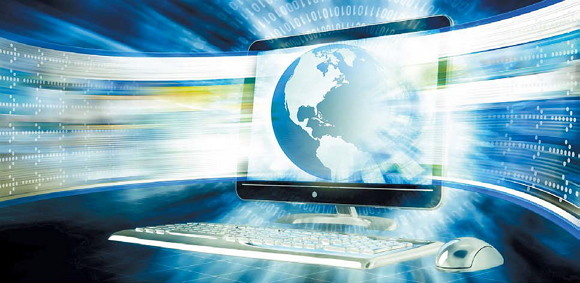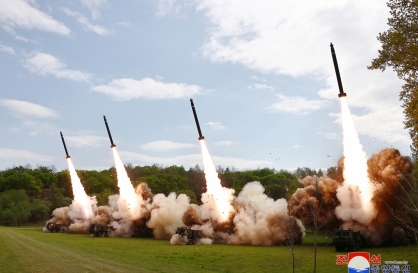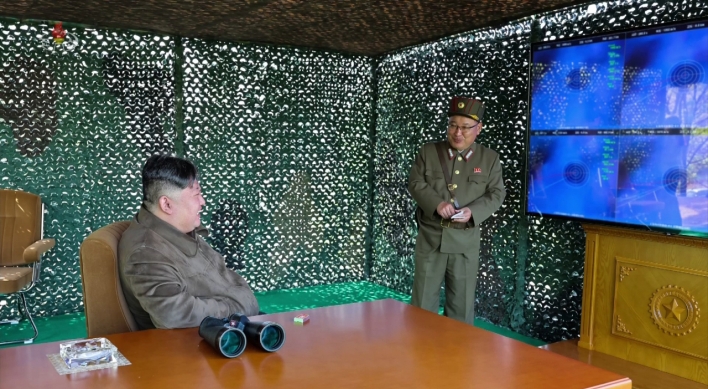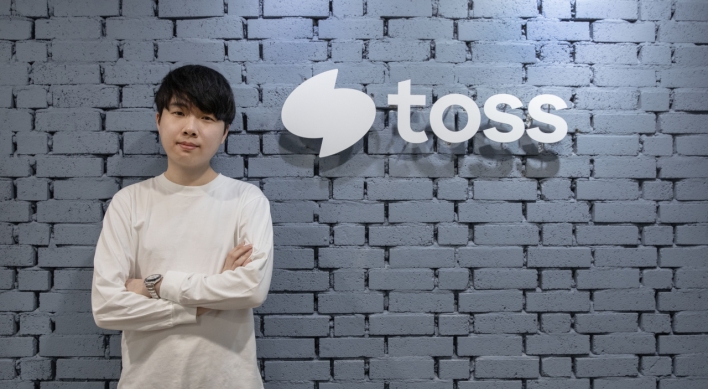In the future, information and communication will be so tightly integrated that multimedia communication and information services between people, objects and computers will become generalized, and possibly ignite a new chapter in space communications.
Information and communication services of the future will most likely utilize a major network, linking people with various objects and computing resources, in order to provide three-dimensional experiences such as holograms.
The following are some characteristics that we may anticipate.
Development of communication systems
Because machine-to-machine communication and data processing must always be readily available from any location, the service area will expand to include not only areas where there is civilization but also remote areas including the polar regions and even the ocean floor.
Three-dimensional communication and information services will become available underwater in order to aid the discovery of submarine resources and the development of submarine cities, while holographic services will be offered in aircraft ― or practically anywhere in space ― as we move forward from a two-dimensional into a three-dimensional communication era.

As people and objects become mutually connected to make communication and exchange of information between the two possible, there will be a boost in traffic between object-to-object, object-to-computers and computers-to-computers ― more so than there will be for people-to-people or people-to-computers.
Furthermore, information in the future will travel even faster than now, granting 3-D imaging services from anywhere, be it land, air, sea or space, without significant delay.
In order to make this happen, spectrum efficiency will have to be improved via technologies in longitudinal wave modulations, patterns, polarizations, beams and multiple antennas ― in addition to securing a wider broadband bandwidth and utilizing various inherent microcell technologies.
Meanwhile, wireless communication technology will be primarily used for wireless power transmission, particularly for remote areas where it is difficult to establish an effective power grid.
And, in a similar context, wireless technology will work as a backup method during potential blackouts and will also be used to transmit solar energy from space.
Development of information systems
The introduction of built-in intelligent ultralow-power sensors in objects will aid collaborative communication and data processing between the sensors. That would allow the sensors to harvest energy and, if need be, incorporate magnetic induction, self-resonance and radio frequency-based wireless charging in order to run permanently without the use of batteries.
Computing systems will be implemented, either externally or internally, into all objects so that big data that is jointly collected from diverse cloud computing systems may be analyzed and used to provide value-added 3-D multimedia information and communication services.
Additionally, information gathered from the Internet of Things as well as the integrated cloud computing systems will together provide the foundation for activating a real-time cyber system, which will be able to detect and alert safety problems in transportation or other facilities so that they can be promptly and accurately resolved.
Creation of new industries
The related content, platform, network and device businesses will be closely integrated to help create new industries based on innovation and digital convergence.
It will incorporate technologies like cloud computing and big data processing in other industry sectors ― such as education, transportation, distribution and manufacturing ― in order to create an industry model that shows cooperation between the content provider, the communication providers and the manufacturers.
Competition between the bottom-up solutions offered by industry leaders from the supplier point of view and the top-down solutions offered by ICT leaders from the consumer point of view will give rise to a new industry that converges different sectors.
Ultimately, the future means smart sensors and computing systems embedded in people, objects and nature ― both on Earth and in space ― as well as personalized 3-D services via mutually cooperative communications and big data processing. And moreover, it means the creation of a cybersystem that utilizes the collected information to minimize various hazards.
Along these lines, information and communications technology will help further digitize existing industries and, by doing so, help create innovative and diverse new industries.
Information and communication services of the future will most likely utilize a major network, linking people with various objects and computing resources, in order to provide three-dimensional experiences such as holograms.
The following are some characteristics that we may anticipate.
Development of communication systems
Because machine-to-machine communication and data processing must always be readily available from any location, the service area will expand to include not only areas where there is civilization but also remote areas including the polar regions and even the ocean floor.
Three-dimensional communication and information services will become available underwater in order to aid the discovery of submarine resources and the development of submarine cities, while holographic services will be offered in aircraft ― or practically anywhere in space ― as we move forward from a two-dimensional into a three-dimensional communication era.

As people and objects become mutually connected to make communication and exchange of information between the two possible, there will be a boost in traffic between object-to-object, object-to-computers and computers-to-computers ― more so than there will be for people-to-people or people-to-computers.
Furthermore, information in the future will travel even faster than now, granting 3-D imaging services from anywhere, be it land, air, sea or space, without significant delay.
In order to make this happen, spectrum efficiency will have to be improved via technologies in longitudinal wave modulations, patterns, polarizations, beams and multiple antennas ― in addition to securing a wider broadband bandwidth and utilizing various inherent microcell technologies.
Meanwhile, wireless communication technology will be primarily used for wireless power transmission, particularly for remote areas where it is difficult to establish an effective power grid.
And, in a similar context, wireless technology will work as a backup method during potential blackouts and will also be used to transmit solar energy from space.
Development of information systems
The introduction of built-in intelligent ultralow-power sensors in objects will aid collaborative communication and data processing between the sensors. That would allow the sensors to harvest energy and, if need be, incorporate magnetic induction, self-resonance and radio frequency-based wireless charging in order to run permanently without the use of batteries.
Computing systems will be implemented, either externally or internally, into all objects so that big data that is jointly collected from diverse cloud computing systems may be analyzed and used to provide value-added 3-D multimedia information and communication services.
Additionally, information gathered from the Internet of Things as well as the integrated cloud computing systems will together provide the foundation for activating a real-time cyber system, which will be able to detect and alert safety problems in transportation or other facilities so that they can be promptly and accurately resolved.
Creation of new industries
The related content, platform, network and device businesses will be closely integrated to help create new industries based on innovation and digital convergence.
It will incorporate technologies like cloud computing and big data processing in other industry sectors ― such as education, transportation, distribution and manufacturing ― in order to create an industry model that shows cooperation between the content provider, the communication providers and the manufacturers.
Competition between the bottom-up solutions offered by industry leaders from the supplier point of view and the top-down solutions offered by ICT leaders from the consumer point of view will give rise to a new industry that converges different sectors.
Ultimately, the future means smart sensors and computing systems embedded in people, objects and nature ― both on Earth and in space ― as well as personalized 3-D services via mutually cooperative communications and big data processing. And moreover, it means the creation of a cybersystem that utilizes the collected information to minimize various hazards.
Along these lines, information and communications technology will help further digitize existing industries and, by doing so, help create innovative and diverse new industries.

By Cho Dong-ho
KAIST professor of electrical engineering
-
Articles by Korea Herald



![[AtoZ into Korean mind] Humor in Korea: Navigating the line between what's funny and not](http://res.heraldm.com/phpwas/restmb_idxmake.php?idx=644&simg=/content/image/2024/04/22/20240422050642_0.jpg&u=)



![[Herald Interview] Why Toss invited hackers to penetrate its system](http://res.heraldm.com/phpwas/restmb_idxmake.php?idx=644&simg=/content/image/2024/04/22/20240422050569_0.jpg&u=20240422150649)

![[Graphic News] 77% of young Koreans still financially dependent](http://res.heraldm.com/phpwas/restmb_idxmake.php?idx=644&simg=/content/image/2024/04/22/20240422050762_0.gif&u=)






![[Exclusive] Korean military to ban iPhones over security issues](http://res.heraldm.com/phpwas/restmb_idxmake.php?idx=652&simg=/content/image/2024/04/23/20240423050599_0.jpg&u=)



